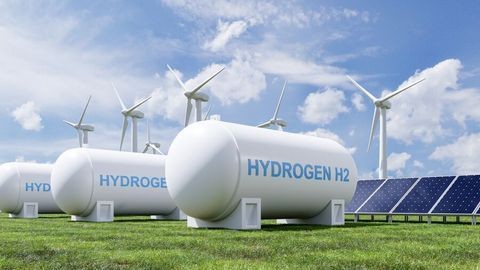Clean Energy Tax Credits and After the Election - What to Expect?
Client Alert | 5 min read | 11.25.24
Since its passage in 2022, the Inflation Reduction Act’s renewable energy tax credits have been in the crosshairs of Congressional Republicans. With many of the Tax Cuts and Jobs Act provisions expiring at the end of 2025, and a full plate of Trump and Congressional Republican Campaign promises for tax cuts in play, the Republicans have pointed to repeal of the IRA as a source of funding to pay for other tax breaks.
Legislative Changes
With a slim majority in both chambers of Congress, a total repeal of the Inflation Reduction Act may be difficult to accomplish. Further, some Republican members of Congress have indicated that they want to retain some provisions of the IRA rather than pushing for full repeal. In order to make changes to the IRA, Congress could use the Budget Reconciliation Process, where only 50 Senate votes are needed for a bill to pass. This seems to be the most likely mechanism under current consideration to repeal or amend Inflation Reduction Act tax provisions.
If Congress decides to repeal or replace certain provisions of the IRA rather than pursue full repeal of the entire IRA, this could take on many forms, including repeal of some credits and not others, earlier sunsets for certain credits, changes to the amounts and bonus credits allowed for certain credits, and changes to the monetization rules. Because Congress may approach modification or repeal of specific tax credits differently, each credit has a different risk profile.
- Higher Risk
- The Section 30D clean vehicle tax credit is the most likely candidate for repeal. Recent media discussions have focused on both President Trump and Republican members of Congress’ interest in full repeal of this credit. There is also a significant cost to the Section 30D credit, which if repealed, could be used to pay for other tax incentives under consideration by Republicans.
- Moderate Risk
- Other tax credits have a more moderate risk of appeal. The Section 48E Clean Electricity Investment Tax Credit and Section 45Y Clean Electricity Production Credit have both been attacked due to the types of technologies that can qualify for the credits, as well as the cost of these incentives. Another option is for Congress to modify these credits by removing the bonus adders for these credits, such as by eliminating the Prevailing Wage and Apprenticeship bonus, Energy Communities bonus, or Domestic Content bonus. Of these bonus credits, we believe the Domestic Content bonus would be the most likely to stay due to campaign pledges to create incentives to keep manufacturing in America. We think it likely that the Prevailing Wage and Apprenticeship bonus is more likely to be on the chopping block.
- The Republicans may also look to eliminate monetization opportunities by repealing the Section 6417 direct pay and Section 6418 transferability provisions. For example, Senator Johnson (R-WI) has called out a Goldman Sachs estimate for tax credit monetization that well exceeds the CBO estimate for the IRA. That said, there remains strong support in the market and industry to keep transferability in play as an alternative means for raising much needed capital for energy development, particularly for emerging technologies and start-up companies in the space.
- Lower Risk
- On the other end of the spectrum, there are several IRA incentives that are closer in line with Republican priorities. We believe these incentives have a lower risk of repeal. These include the Section 45X Advanced Manufacturing Production Tax Credit, the Section 45Q Carbon Capture and Sequestration Credit, the Section 45V Hydrogen Production Tax Credit, and the Section 45U Nuclear Production Tax Credit.
Treasury Department and IRS Guidance
The Trump Administration may also approach making changes to the IRA provisions through withdrawal or abandonment of IRA implementation through Treasury Department and IRS guidance. Different types of guidance require different action for modification or revocation:
- Final Treasury Regulations can generally only be modified or revoked through another proposed rule and notice and comment process. It can take years to modify or withdraw a final rule.
- Some final rules, as well as certain other agency actions, can also be repealed pursuant to the Congressional Review Act (“CRA”). The CRA only applies to agency actions taken during a 60-days-of-continuous-session period beginning on the day the agency transmits a record of the action to Congress. Actions subject to a successful CRA disapproval resolution—majority votes in both Chambers and signature by the President—cannot later “be reissued in substantially the same form.”
- The final rules for Transferability, Direct Pay, Prevailing Wage and Apprenticeships were issued earlier in 2024 and fall outside this review period and would therefore require formal notice and comment rulemaking to modify or withdraw the rules.
- Final Regulations for Sections 45X (the Advanced Manufacturing Production Tax Credit) and 48D (CHIPS Act Manufacturing Investment Tax Credit) were released in October 2024, which puts them, and other final regulations, within the 60-day window for CRA review.
- So far, members of Congress have not specifically stated whether Congress will take action on any of the Treasury Regulations issued within the CRA review period.
- Proposed Treasury Regulations can remain unfinalized or be revoked by a future Administration without additional notice and comment.
- Several Treasury Regulations related to IRA are currently in proposed form and are awaiting the issuance of final regulations. These include the Section 48E Clean Electricity Investment Tax Credit, the Section 45Y Clean Electricity Production Tax Credit, and the Section 48E Low-Income Communities Bonus credit.
- Other Treasury and IRS Guidance, such as IRS notices, Revenue Rulings, Revenue Procedures, and FAQs can usually be revoked or modified at any time without significant process.
- Guidance related to the Domestic Content bonus and Energy Communities exists only in the form of informal guidance, as no formal rules have been issued.
- The IRA regulations may also face challenges in court, following a general uptick in litigation where taxpayers have successfully challenged Treasury Regulations. Further, following the Supreme Court’s decision in the Loper-Bright, case, which overturned the long-standing Chevron doctrine establishing a high-level of deference to agency rulemaking, courts may place less emphasis on the Treasury Department and the IRS’s interpretation of the provisions of the IRA.
Our Clean Energy Tax Credit attorneys and Government Affairs professionals at Crowell & Moring continue to follow developments closely, and are available to discuss the impact of these regulations. For additional coverage of the Inflation Reduction Act clean energy tax credits, please visit our Clean Energy Tax Credit page.
Contacts
Insights
Client Alert | 2 min read | 12.19.25
GAO Cautions Agencies—Over-Redact at Your Own Peril
Bid protest practitioners in recent years have witnessed agencies’ increasing efforts to limit the production of documents and information in response to Government Accountability Office (GAO) bid protests—often will little pushback from GAO. This practice has underscored the notable difference in the scope of bid protest records before GAO versus the Court of Federal Claims. However, in Tiger Natural Gas, Inc., B-423744, Dec. 10, 2025, 2025 CPD ¶ __, GAO made clear that there are limits to the scope of redactions, and GAO will sustain a protest where there is insufficient evidence that the agency’s actions were reasonable.
Client Alert | 7 min read | 12.19.25
In Bid to Ban “Woke AI,” White House Imposes Transparency Requirements on Contractors
Client Alert | 5 min read | 12.19.25
Navigating California’s Evolving Microplastics Landscape in 2026
Client Alert | 19 min read | 12.18.25
2025 GAO Bid Protest Annual Report: Where Have All the Protests Gone?





